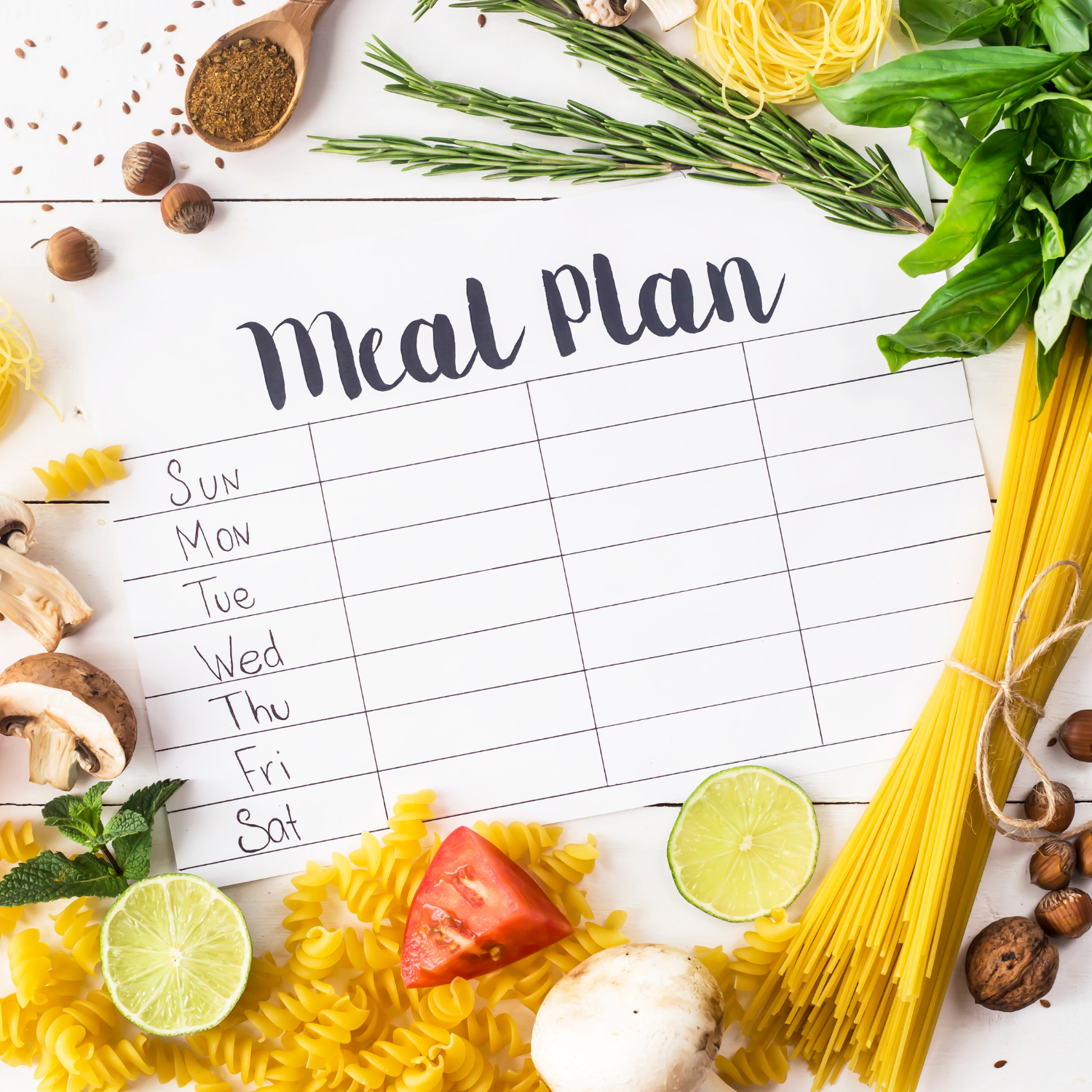Introduction to Meal Planning
Meal planning is a strategic approach to preparing and organizing meals for a designated period, often a week. It plays a crucial role in maintaining a healthy diet by facilitating the consumption of balanced meals. A balanced meal typically includes macronutrients—proteins, carbohydrates, and fats—as well as essential micronutrients such as vitamins and minerals. Each of these components contributes significantly to our overall health and wellness. For instance, proteins support muscle building and repair, carbohydrates provide energy, and healthy fats are vital for various bodily functions, including hormone regulation.
The essence of meal planning lies in its ability to simplify the process of cooking and eating. By dedicating time to plan meals in advance, individuals can make informed decisions about their dietary choices, ensuring a diverse intake of the nutrients needed for optimal health. This method not only promotes healthier eating habits but also enables individuals to tailor their meal choices to meet specific health goals, whether it be weight loss, muscle gain, or simply maintaining a balanced diet.
In addition to fostering healthier eating patterns, meal planning offers practical benefits. For instance, it can save valuable time during busy weekdays, as grocery lists and meal suggestions are prepared ahead of time. Consequently, this reduces the likelihood of last-minute unhealthy food choices or takeout. Furthermore, effective meal planning helps minimize food waste by ensuring that food purchased is utilized efficiently, thus making the most out of every grocery trip. Overall, the practice of meal planning can support better dietary habits while contributing to improved health outcomes.
Understanding Nutritional Needs
In the pursuit of a well-structured meal plan, understanding the fundamental principles of nutrition is paramount. Nutrition encompasses the intake of food substances that provide the energy and nutrients necessary for the body to function effectively. Individual dietary requirements can vary significantly based on several factors, including age, sex, activity level, and specific health goals. Therefore, it is essential to assess these parameters to create a personalized meal plan that meets unique nutritional needs.
The food pyramid can serve as a helpful guide when considering a balanced diet. This visual representation illustrates the relative proportions of different food groups that should be consumed to maintain health. The base of the pyramid emphasizes the importance of carbohydrates, such as whole grains, which should form the foundation of daily meals. Moving up, protein sources, such as lean meats, beans, and nuts, are recommended, followed by a variety of fruits and vegetables that provide essential vitamins and minerals. At the apex of the pyramid are fats and sweets, which should be limited to maintain a balanced diet and avoid excessive caloric intake.
Another crucial aspect involves understanding portion sizes. Proper portioning assists in moderating calorie consumption while ensuring that all necessary nutrients are included. Techniques such as using measuring cups or visuals, such as comparing food portions to household items, can help individuals gauge appropriate serving sizes. Moreover, being mindful of personal hunger cues can aid in recognizing the body’s requirements. By combining knowledge of nutritional needs, recognizing the significance of the food pyramid, and implementing proper portion control, one can craft an effective meal plan that supports overall well-being and health objectives.
Creating a Weekly Meal Plan Template
Designing a practical meal planning template is essential for maintaining a balanced diet throughout the week. A well-structured template can simplify meal preparation and help you stay organized. To begin, gather a basic grid layout that spans seven days of the week. Each day should have designated sections for breakfast, lunch, dinner, snacks, and hydration. This visual approach enables you to see your meals at a glance and ensures that you incorporate a variety of food groups.
Start by filling in the breakfast sections first. Consider selecting quick options such as smoothies, oatmeal, or eggs, which can be prepared easily in the morning. Next, move to lunches; think about incorporating salads, grain bowls, or leftovers from dinner to ensure a balanced intake of nutrients. When selecting dinners, aim to include lean proteins, whole grains, and a variety of vegetables to create a nutritious and fulfilling meal. Snacks are essential to prevent feelings of hunger between meals, so include fruits, nuts, or yogurt for a healthy option.
Hydration is often overlooked, yet it plays a critical role in overall health. Allocate a section in your template for tracking water intake, recommending a goal of eight 8-ounce glasses daily. This helps to establish a regular hydration habit and encourages you to keep a water bottle handy throughout the day.
Flexibility is key when creating a weekly meal plan template. Life can be unpredictable; therefore, allowing room for adjustments is vital. Whether it’s making room for planned leftovers, accommodating dietary changes, or adjusting for social events, a flexible plan will help you stay on track without feeling confined to a strict regimen. Prioritizing balance and variety will not only enhance nutritional intake but also make meal planning a more enjoyable experience.
Choosing Nutrient-Dense Foods
Nutrient-dense foods are those that provide a high amount of essential nutrients relative to their calorie content. Incorporating these foods into a balanced meal plan is crucial for achieving optimal health and vitality. To create a nutrient-dense meal plan, one should prioritize whole foods, which include a variety of fruits, vegetables, whole grains, lean proteins, and healthy fats. Each of these categories offers a unique set of vitamins, minerals, and beneficial compounds that contribute to overall well-being.
When selecting fruits and vegetables, aim for a colorful variety, as different colors often signify a range of nutrients. Leafy greens, such as spinach and kale, are excellent sources of iron and calcium, while berries provide antioxidants. Seasonal produce is not only fresh but also more flavorful and cost-effective. Many local farmers’ markets offer seasonal options, which can enhance the nutrient profile of your meals while supporting local agriculture.
Whole grains, such as brown rice, quinoa, and whole wheat bread, are rich in fiber and B vitamins. They are an excellent choice for sustaining energy levels throughout the day. Lean proteins like chicken, fish, beans, and legumes offer essential amino acids that help build and repair tissues. Including healthy fats such as avocados, nuts, and olive oil is also important, as these fats contribute to heart health and the absorption of vitamins.
Incorporating a variety of these nutrient-dense foods into your meal planning can enhance nutritional value while also making mealtime enjoyable. Experimenting with local and seasonal ingredients not only adds freshness but also seasonal flair to your meals. By thoughtfully selecting nutrient-rich foods, you will create a well-rounded meal plan that supports your health and wellness goals.
Meal Prep Techniques
Meal prep is an essential component in creating a balanced meal plan for the week, as it allows for efficient cooking and better management of meal portions. One effective technique is batch cooking, where you allocate a specific day of the week to prepare large quantities of food that can be portioned out for several meals. This method not only saves time but also ensures that you have healthy options readily available.
When batch cooking, choose versatile recipes that allow you to create multiple dishes from the same base ingredients. For instance, preparing a large batch of grilled chicken can lead to various meals throughout the week, including salads, wraps, or stir-fries. Incorporating grains, such as quinoa or brown rice, can further enhance the diversity of your meals, as they can easily complement different proteins and vegetables.
Another effective meal prep technique involves freezing meals in advance. Freezing not only extends the shelf life of your meals but also preserves their nutritional value. Invest in high-quality, airtight containers or freezer bags to minimize freezer burn. Labeling these containers with dates and content details ensures that you can easily track what you have available and utilize items before they expire.
Furthermore, proper food storage and reheating practices are vital for maintaining safety in meal prep. Always allow cooked food to cool to room temperature before placing it in the refrigerator or freezer to prevent bacterial growth. When reheating meals, ensure they reach an internal temperature of at least 165°F to guarantee safety. Following these guidelines will provide not only convenience but also peace of mind, as you enjoy your delicious, home-cooked meals throughout the week.
Incorporating Variety and Moderation
Creating a balanced meal plan goes beyond just selecting nutritious foods; it also involves embracing variety and moderation. A diverse diet ensures that you receive all the necessary nutrients from different food groups, such as fruits, vegetables, whole grains, lean proteins, and healthy fats. Each food group contributes unique vitamins and minerals essential for maintaining overall health. For instance, incorporating various fruits and vegetables not only adds vibrant colors to your meals but also enhances the range of nutrients consumed. Aim to include a rainbow of colors on your plate, as this approach typically signifies a broad spectrum of nutrients.
Moreover, switching up flavors and cuisines can significantly reduce meal fatigue, a common concern for those adhering to a meal plan. Experimenting with different herbs, spices, and cooking methods introduces new tastes and textures to your meals. For example, one might infuse Mediterranean flavors by using olive oil, garlic, and lemon, or opt for Asian-inspired dishes featuring soy sauce, ginger, and lemongrass. These variations not only make mealtime enjoyable but also promote a well-rounded diet, ensuring a gradual incorporation of diverse foods over time.
While it is essential to prioritize healthy foods, it is equally important to approach treats and less nutritious options with moderation. Rather than completely eliminating favorite snacks or indulgent dishes, integrating them mindfully can lead to a more sustainable dietary pattern. Allocate specific occasions for these treats, allowing yourself to enjoy them without guilt. This strategy helps maintain a balanced meal plan while satisfying cravings. By fostering an attitude of moderation, you create a healthier relationship with food, making it easier to stick with your meal planning goals in the long run.
Shopping List Creation
Creating a shopping list is a vital step in successful meal planning, ensuring that you acquire all necessary ingredients while minimizing waste and unnecessary purchases. The first step in developing a detailed shopping list is to thoroughly review your weekly meal plan. List out all the items required for each meal, including pantry staples, perishables, and condiments. Group items by categories such as fruits, vegetables, grains, proteins, and dairy to streamline your shopping experience.
To avoid impulse purchases, it is crucial to adhere to your list. Before heading to the grocery store, take a moment to solidify your strategy. One effective approach is to set a budget for each shopping trip. Consider the cost of items included in your list to manage spending and discourage the temptation to buy non-essential items. Utilizing a budgeting app can also provide a clearer view of your expenditures and help you stick to your financial goals.
Shopping at specific times can also enhance your shopping experience. Aim to shop when the store is less crowded, as this makes it easier to focus on your list and resist distractions. Furthermore, consider visiting local farmers’ markets for fresh produce, which can often lead to savings while supporting local agriculture. Be mindful of seasonal fruits and vegetables; they are typically more affordable and flavorful.
Lastly, when at the store, keep your list in hand and check off items as you go. This practice not only helps track your purchases but also enables you to maintain your focus and avoid unplanned detours into aisles that may lead to overspending. By implementing these strategies, you can create a comprehensive shopping list that allows you to stay organized and budget-conscious while preparing for a balanced week of meals.
Tracking Progress and Adjusting the Plan
Implementing a meal plan is a dynamic process that requires ongoing evaluation and adjustments. Tracking daily meals can provide insights into dietary habits and nutrient intake, thereby enabling individuals to assess the effectiveness of their meal plan over time. Regular monitoring helps identify patterns in food choices, caloric consumption, and nutrient balance, ensuring that the meal plan remains aligned with health goals.
To facilitate this tracking process, various tools and applications are available. Prominent among them are smartphone applications such as MyFitnessPal, Lose It!, and Cronometer, which allow users to log meals conveniently while offering nutritional breakdowns. These apps also include features for goal setting and tracking progress, making them valuable resources for anyone looking to create a balanced meal plan. Furthermore, utilizing a physical food journal can also be an effective method for those who prefer a more tactile approach.
Analyzing the data collected through these tools is crucial for making informed adjustments. For instance, if an individual notices consistent energy dips or cravings during certain days of the week, it may indicate the need for meal modifications. Adjustments could include varying portion sizes, incorporating different foods, or increasing nutrient-dense options to enhance satiety. Additionally, as health goals evolve—whether due to weight loss aspirations, muscle gain, or dietary restrictions—it is essential to iteratively refine the meal plan to reflect these changes.
Feedback from the body—such as energy levels, mood, and overall well-being—can also guide these adjustments. Thus, it is important to remain attentive to how different meals impact daily life. Ultimately, tracking progress and adjusting the meal plan fosters a proactive approach to nutrition, allowing for continuous improvement and fostering a healthier lifestyle.
Conclusion and Final Thoughts
In summary, creating a balanced meal plan for the week is a practical step toward achieving a healthier lifestyle. Throughout this post, we have explored the fundamental elements that contribute to a well-structured meal plan, such as incorporating a variety of food groups, understanding portion sizes, and the significance of meal prepping. These components are essential in ensuring that your meals are not only nutritious but also satisfying.
The importance of consistency cannot be overstated when it comes to meal planning. Establishing a routine helps to streamline the process, making it easier to select, prepare, and enjoy your meals. As with any new endeavor, starting the journey toward effective meal planning may feel daunting. However, it is vital to remember that progress takes time, and the ability to devise a balanced meal plan will improve with practice.
For beginners, it is beneficial to start small. Focus on planning a few meals per week rather than attempting to create an elaborate weekly menu from the outset. This gradual approach allows you to gauge your preferences and adjust as needed while fostering confidence in your planning skills. Consider involving family members or friends in the meal planning process; this not only makes planning more enjoyable but can also result in discovering new recipes and cooking styles.
Ultimately, taking the first step towards a balanced meal plan is an empowering act that sets the foundation for health and wellness goals. Encourage yourself to experiment with flavors, ingredients, and techniques to cultivate a meal plan that resonates with your lifestyle. By remaining committed and patient with yourself, you can achieve the nutritional balance necessary for your well-being and longevity.




